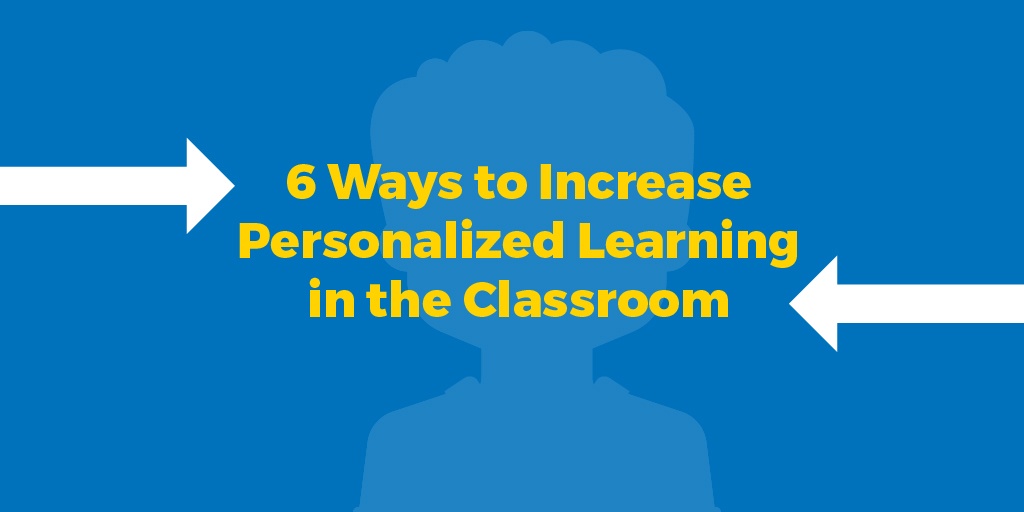
It’s midyear and time to really evaluate your students’ progress. What kind of growth have they made? What goals still need to be met? What about those state assessments that will be here before you know it? Here are some easy tips for increasing personalized instruction and maximizing your students’ growth:
- Set Goals: What better way to get your students on the right track than setting some goals? This is truly a lifelong lesson—setting goals helps students gain focus, give direction, and can be a big motivator. Guide students to see where they are now academically, and where they need to be by the spring. Have students take ownership and develop their own goals, but make sure the goals are realistic and not too lofty. For younger students, some goals could be learning all their sight words or math facts. For older students, perhaps they need to work on some writing goals or long division. Focus on two or three goals at a time, and once they are met, add two or three more!
- Student Conferences: The first tip lends itself to this step. It is important for students to be autonomous and make their own goals, yet it is imperative for you to guide them. Setting time aside to meet with each student individually and discuss goals will help them find success. Create a document of some kind (remember, Google is your friend—there is probably some type of template already out there!) so your students can write down their goals. Then, create a plan of action to determine how the goals will be met. Check in with students periodically to see how progress is going and offer encouragement. Once goals are met, celebrate! Then write some more—learning is ongoing and their goals should be, too.
- Give Choices: During work time, it is important to give your students choices. This can include flexible seating, partner work, or a makerspace. Giving choices creates independent workers and holds them accountable for their own goals. For example, if one student has a goal on writing, then during work time, he/she may choose to use technology to research writing topics or use the old-fashioned pen and paper to tackle that writing goal. If another student has a goal to learn sight words, have magnetic letters out so he/she can use them to spell the words, or use shaving cream to write those words and put them to memory. When conferencing students, they may have some interesting and unique ideas to help them to meet their goals. Listen and let them try—you may learn a thing or two that you can pass on to other students as well!
- Learning Apps: There are many apps out there that allow students to work at their own pace. Some of these apps will give students an initial assessment before they get to work. The apps advance students when they are ready, and many align with the Common Core standards, supplementing your curriculum. Istation and Zearn are two great examples of this. Talk to your PTA or district for funding. When students are on these apps, it would be a great time to hold your individual conferences!
- Individual Work Bags/Tubs: This may take a little time initially, but it will pay off in the end. Give each student a bag or tub containing learning activities suited to their specific needs. For example, one student may have addition flashcards, sight words, an appropriately leveled book, comprehension questions, etc. and another student may have multiplication flashcards, higher level sight words, an appropriately leveled book, and specific writing topics from which to choose. During work time, students can use their individual materials to accomplish specific goals. This will also create independent workers and give students choices as they work, which will be motivating. Periodically, as you conference with students, pull out their work and review it with them—and make any necessary changes or additions.
- Independent Projects: Allow students to create and explore topics they want to learn about. By giving students this type of freedom, they will be more motivated and engaged in their learning. Initially, you may introduce a topic such as the moon or World War II. From this, students’ natural curiosity can lend itself to further discovery, such as space exploration or concentration camps. Students can research, write, build, create, and collaborate.
A one-sized curriculum will not meet the needs of each of your students. It can be hard to make the transition from a traditional setting to personalized learning—I am still in the process of doing this, and it’s hard to give up that control. Start small, collaborate with your coworkers, and don’t be afraid to make mistakes. Using these steps should help pave the way to successfully implementing personalized learning in your classroom!
How have you integrated personalized learning in your classroom? Let us know in the comments below! And for more insightful teaching tips, be sure to subscribe to the Educator blog today.



